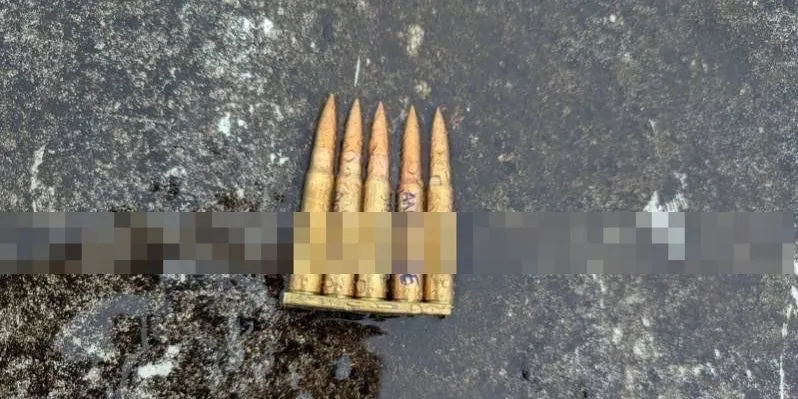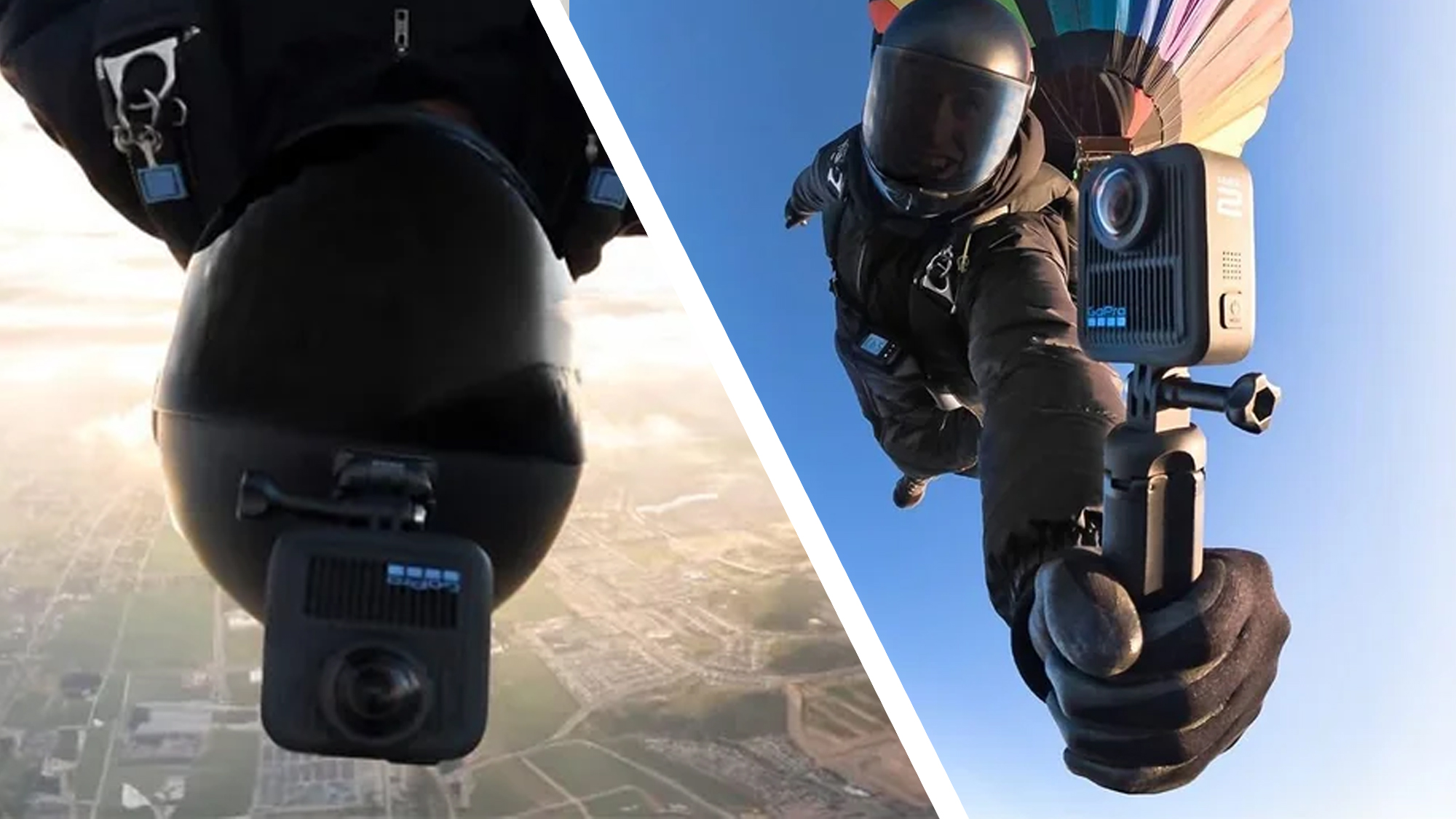
Alain Stephens is an investigative reporter covering gun violence, arms trafficking, and federal law enforcement.
American shootings have put a weird spin on the old tradition of writing on messages on munitions: Recent suspects have begun scrawling memes, slogans, or in-group codewords on shell casings.
On Wednesday, after a sniper opened fire on a U.S. Immigration and Customs Enforcement office in Dallas, investigators found an unfired shell casing with “ANTI-ICE” written on it. Before too long, the FBI chief Kash Patel posted a photo of the bullets to social media.
Just two weeks earlier, at the scene of Charlie Kirk’s assassination, authorities in Utah recovered spent rifle cartridges etched with internet references like “Notices bulges OwO what’s this?”; a sequence of arrows used to drop a bomb in the video game “Helldivers 2”; the anti-fascist song “Bella Ciao”; and “If you Read This, You Are GAY lmao.”
The messages-on-casings approach echo a similar assassination in December 2024, when Luigi Mangione allegedly gunned down UnitedHealthcare’s CEO in the middle of New York City. Investigators later revealed that his spent shells were engraved with the words “deny,” “defend,” and “depose” — an apparent critique of the insurance giant that gave rise to spiraling conspiracies about Mangione’s own political inclinations. Other killers seem to have taken note.
In the warped arena of memetic warfare, the press often plays along with the shooters’ messaging.
At first glance these inscriptions may seem to hint at ideology — perhaps in Mangione’s case they did — but experts warn they can be something else entirely: a twisted performance for the internet age.
It’s too early to say if these shootings have ideological motives, but in the rush to judge, the media keeps choosing to interpret these messages not as memes but as coherent political manifestos.
Usually, the media shies away from publishing manifestos. In this warped arena of memetic warfare, however, the press often plays along with the shooters’ messaging, treating each slogan like a puzzle piece in some ideological scavenger hunt. In doing so, the killer’s viral power beyond is magnified the act itself.
Aiming for Viral
Tyler Robinson, the suspect in the Kirk shooting, admitted that he was, to borrow a phrase, in it for the lolz. Prosecutors report Robinson texted his roommate: “Remember how I was engraving bullets? The fuckin messages are mostly a big meme.”
Extremism researchers and journalism critics have said Robinson’s description of his actions matches the evidence. As Alex Newhouse of University of Colorado at Boulder explained, in cases like these it’s less about context of the message. “It’s not the specific ways that things are written on the gun,” he told Wired, “but that they’re writing something on the gun at all.”
In other words, the content — whether anti-fascist songs, furry memes, or snarky insults — could be interpreted largely as an ironic flourish. Michael Senters, a researcher at Virginia Tech, noted that the media sees a puzzle of “ideology,” but for “internet natives” the bullet etchings look like jargon spilled straight from a teenager’s group chat: They “only show he spent a lot of time on the computer, being terminally online.”
Experts say the scrawled messages embody a new wave of online propaganda, disinformation, and misinformation wrapped in absurdist humor — a communication strategy rooted in meme culture and mockery. It’s performance, not persuasion.
The goal is to spark interest, to make the uninitiated give informational chase. It’s not winning converts, but winning attention. In a country where gun violence is so common that some killings receive little news coverage, such messages can bait the media into repeating the graffiti and turning the act, and shooter themselves, into a viral moment.
In the case of Mangione, his message materialized into a shared reality and virality: print‑on‑demand shops relaying the message on shirts and magnets. Supporters have dedicated billboards and trucks depicting him as a saint.
Criminal justice experts say this viral iconography is exactly how politics are being meme‑ified today: The idea is to bring the fringes into the mainstream.
Inscribing slogans onto weapons and ammo can serve a psychological function too. It allows the perpetrator to absolve their victims of choice or humanity. In the shooter’s mind, the act may become destiny, the message pre-written on brass casing, as if the bullet carried a justification before it was ever fired.
An Old Tradition
Graffiti on weapons is not new. In ancient Greece, slingers carved taunts on lead projectiles — one surviving shot literally reads: “Catch!” Roman legions and medieval mercenaries marked their arrows with similar jeers.
In the 20th century, American bomber crews chalked slogans on bombs during World War II, and soldiers in Vietnam scrawled everything from “War Is Hell” to crude cartoons on helmets and rifles.
Even today, artillery shells and bombs sometimes leave bases with Sharpie messages like “Rest in Hell” or “Say Cheese. Your Dead” — spelling error and all. Police officers’ patrol rifles have been inscribed with messages like “You’re Fucked.”
For soldiers, scrawling messages on bombs or bullets is perhaps less about reaching the enemy than about reaching themselves: a ritual of control, gallows humor, and catharsis that helped impose meaning on violence and gave them a fleeting sense of agency over death or certain doom.
The act is ancient. What’s new is the medium and audience: Shooters now write for cameras, news cycles, and the viral churn of social media.
Media, the Straight Man
The problem is that mainstream media has fallen squarely into the trap.
Reporters have gravitated toward these cryptic messages as if they were the key to motive.
Press conferences and headlines highlighted every word scratched on casings, even amplifying dubious accounts of “transgender ideology” on fired brass without evidence. This swift parsing, however, only plays into the shooters’ game.
Experts warn: Do not play along. Criminologists like Adam Lankford have shown that modern attackers often crave exactly this kind of fame, even in death. “A lot of these shooters want to be treated like celebrities. They want to be famous,” he told The Associated Press — making coverage of their cryptic graffiti exactly the reward they seek.
In the hours after every assassination, the country plays the same cynical game, parsing the killer’s bullet graffiti or online trail like tea leaves. There is a palpable desperation to pin the gunman’s politics on the other side or disclaim him from their own — as Patel seemed to be doing with the “ANTI-ICE” casing.
Indeed, one analysis found 87 percent of mass shooters explicitly sought fame in their planning, using media coverage of prior attacks as a blueprint.
In many cases, excessive focus on the killer has turned them into anti-heroes of an online cult, while root causes fade from view. What remains is their cultural staying power, and the tactics used to achieve it.
In amplifying these cryptic scribbles on shell casings, newsrooms become unwitting collaborators in the shooter’s performance.
Violence as Spectacle
Journalism ethics is clear: Moving forward, newsrooms should invert their priorities.
The “No Notoriety” guidelines — backed by victims’ families, the Giffords Center, and even law enforcement agencies — urge reporters not to immortalize killers or their messages. By immortalizing the message, we may inadvertently immortalize a methodology.
The meme-ification of violence is a reminder: Public assassinations and mass shootings today are as much about theater as ideology.
These high-profile killers are staging a performance, knowing the audience is global and the press will play along. The choice to etch bullets with song lyrics or anime jokes isn’t about belief; it’s about spectacle. And every time we give breathless coverage to these details, we reward that spectacle.
The true danger is not that shooters will successfully recruit through manifestos or casings. It’s that society, hypnotized by their trolling, will mistake intentional noise for a signal — and replicate it. In that sense, the most successful act of viral violence is not the attack itself, it’s the conversation afterward, when the killer’s notoriety and stylings are a message of its own.
Once amplified, the shooter’s dialect becomes its own weapon of inspiration — loosed into public life, doing damage long after the last round was fired.



